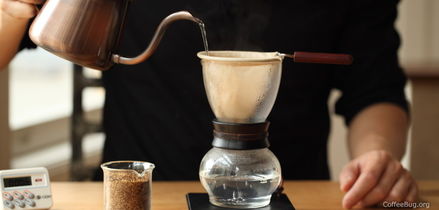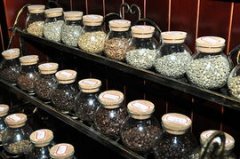Tips for making boutique coffee flannel brewing coffee tastes better
There is a saying that flannel can extract all the characteristics of coffee and combine them perfectly.
Generally speaking, filter paper and flannel have so much in common that they are roughly equivalent in use.
Compared with filter paper, flannel mesh is larger, soft texture, no pulp taste, because the permeability is better, so it can retain more oil and other substances in the coffee liquid. In summary, flannel extract coffee is more "mellow" and has a better body.
The author believes that flannel brewed coffee is quite similar to coffee made by siphon pot, but it saves complicated and cumbersome operation process and excessive cleaning work. For those who have limited time and are too lazy to do it, it is a great boon. A small net bag can make a cup of mellow coffee.
Flannel is simpler than a siphon pot, but flannel has a delicate side.
The new flannel should be boiled with boiling water before use; the flannel after use should be cleaned as soon as possible, and the cleaning process should be cleaned with water as much as possible, and no detergent should be used; after cleaning, it should be maintained with ice water. If the flannel is dried and stored, it will cause the permeability of the flannel to deteriorate, and the residual coffee substance will also deteriorate to produce taste. Such flannel basically has no superiority.
Often a friend will ask the author, flannelette surface has one side with fur, one side does not, when flushing in the end which side should face inward?
In fact, both sides can be, the difference is only: if the fleece is facing inward, the coffee flow rate is slightly slower, and vice versa, the extraction speed is faster. So we can extrapolate the results: under the same ground premise, if the fleece is facing inward, the coffee will be more stable and mellow, and vice versa, the coffee will be more lively and fresh. Which way in? Which side is outward? Depends on your mood!

Important Notice :
前街咖啡 FrontStreet Coffee has moved to new addredd:
FrontStreet Coffee Address: 315,Donghua East Road,GuangZhou
Tel:020 38364473
- Prev

Coffee grading knowledge how to classify coffee grades
If the owners of two cafes are discussing, shopkeeper A says, "the coffee beans we use in our shop are NO.2 in Santos, Brazil. What about your store?" shopkeeper B said: our store uses Brazilian NO.1 of the same grade as Blue Mountain NO.1. The evaluation method adopted in Brazil is the deduction method, which is classified according to the number of defective beans per 300g of staple beans, with a total of seven grades from NO.2 to No.8, with a deduction of less than 4 points.
- Next

Coffee brewing made a comeback a hundred years ago
At the end of the 19th century and the beginning of the 20th century, Bentz Melitta, a German housewife, thought it was too troublesome to make coffee now. One day, she made a hole in the bottom of the copper bowl, took out an blotting paper from her son's schoolbag and put it into the hot water. Immediately, the mellow coffee dripped into the pot through the blotting paper. That's how she invented the ability to filter dregs and retain mellow coffee.
Related
- Beginners will see the "Coffee pull flower" guide!
- What is the difference between ice blog purified milk and ordinary milk coffee?
- Why is the Philippines the largest producer of crops in Liberia?
- For coffee extraction, should the fine powder be retained?
- How does extracted espresso fill pressed powder? How much strength does it take to press the powder?
- How to make jasmine cold extract coffee? Is the jasmine + latte good?
- Will this little toy really make the coffee taste better? How does Lily Drip affect coffee extraction?
- Will the action of slapping the filter cup also affect coffee extraction?
- What's the difference between powder-to-water ratio and powder-to-liquid ratio?
- What is the Ethiopian local species? What does it have to do with Heirloom native species?

